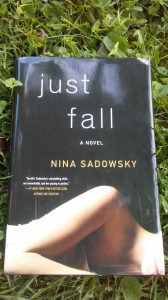While MWW is working hard on its newly-minted nonprofit governance and its board recruitment (read our statement here), we’re also keeping in mind our mission to help writers reach their writing goals. This Craft + Community “Super Mini” is a dynamic day-and-a-half with a decidedly different structure-shorter, smaller, less expensive, and designed for writers of every level in their careers.
You call your morning workshop “Manuscript Makeover,” but is it really possible to redo a manuscript in three and a half hours?
At the beginning of the session I always promise participants that they’re going to know a lot more at noon than they do at 8:30 when we start the class. It’s my job to deliver on that promise. Everything that happens in those three and a half hours will relate to the manuscripts that they sent me–no generic lectures, I promise! My goal is that they’ll have enough feedback to know exactly the next steps they need to take to move their manuscripts a notch or two closer to publication. In addition to the time we have together as a class, I’m going to meet with each writer one-on-one for 15 minutes in the afternoon to go over their pages line by line.
Do writers need to have a completed book manuscript to benefit from Manuscript Makeover?
No, all they need are a one-page synopsis and their book’s opening 10 pages. To succeed in today’s publishing world, a writer has to have two things: A compelling story to tell and the ability to tell it well. The synopsis addresses the first, and the sample pages show the second. Some writers come to Manuscript Makeover with only an idea and a rough draft of the first chapter. They want to know if they should keep writing. Others have finished their books and wonder what the next step is. Then there are the writers who have tried to market their books but with no success. They want to know where they fell short and how to fix the problem.
Why do you limit the class size to 15 writers?
For a couple of reasons. First, I want to encourage a sense of community. After all, we’re all writers even though we may be at different stages of development. Second–and this is personal–the class is really labor-intensive for me as the facilitator. I like to read each manuscript several times, adding notes, making suggestions and editing as I go. I build the class from scratch each time I teach it. I’ve found that 15 is the perfect number.
You open the class to novelists and nonfiction writers. Why not specify one or the other?
Typically the class attracts more novelists than nonfiction authors, even though nonfiction is easier to sell these days. Regardless of the genre we choose–mystery, memoir, romance, biography, thriller, personal experience, etc.–we’re all storytellers. We have to know how to grab and hold readers’ attention, how to build tension, create dialogue and weave in backstory. Those components need to be in every story we tell.
As a teacher, what is your greatest challenge when you face a room full of writers with various skills, interests and needs?
My biggest challenge is to keep them motivated after the workshop is over. Too often they leave with good intentions, but then they get sidetracked by obligations at work or at home. Their manuscripts suddenly occupy the back burner. So, this year I’m going to try something new. The writers in my class will have the opportunity to book a half hour of my time for some time in the fall. There will be a modest fee, and not every writer will want or need to take advantage of the offer. If they do, they can choose when and how to use the time. They might decide to send me a few revised pages, or we can talk via phone about problems they’ve encountered since the July workshop. The important thing is to keep up the momentum…to keep on keeping on. As I said earlier, you need two things to succeed as a writer–a good story to tell and the ability to tell it well. But there’s a third requirement, and that’s perseverance.


